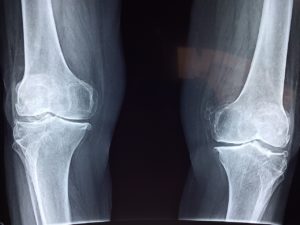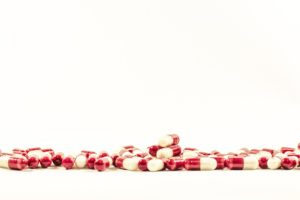Feed You Bones [Show Notes]

Basics
Calcium is a natural element (yep, one of those periodic table guys). Our teeth and our bones are made strong by it.
For most healthy adults, daily recommended amount is 1000 mg. For females approaching 50 years old, recommendation increases to 1200 mg to 15oo mg per day.
The trick to supplementation is knowing that your body can only absorb 500 mg of elemental calcium at a time. So you gotta split it up. When you get it from your diet, then this is NBD because it will naturally be spread out between your meals and snacks.
These supplements always go with Vitamin D. Vitamin D is responsible for helping with calcium absorption. If you’re low on D (and more people are than might realize b/c very few jobs have you working out in the sun – and Vitamin D is synthesized and activated by UV exposure), calcium can’t be absorbed and used like it should.
2 types of OTC supplements
- Calcium carbonate (Caltrate) – a base (also what makes up OTC antacid tablets [i.e. Tums] so a bonus if you have heartburn); requires the acid in your stomach to break out of the tablet for your body to use.
- Calcium citrate (Citracal) – an acid; doesn’t require extra stomach acid to be absorbed. A good supplement for those who had gastric bypass, because the stomach has been shrunk and there are less acid pumps to break down medications that require acid to work. Bad for people with reflux or ulcers.
The labels can be tricky. It will say “600 mg Calcium Carbonate”, but you have to look for the hint of how much elemental calcium that is equal to. This is because your recommended daily dose is in milligrams of elemental calcium. So, doctors don’t always tell you that when they recommend it. Your calcium-rich foods are going to provide you with 250-300 mg of elemental calcium per serving (about 25% of your daily requirement).
Random dietary sources (between 6-20% of your daily requirement)
- White Beans
- Black-eyed Peas
- Sardines (cuz you eat their bones?!)
- Dried Figs
- Bok Choy
- Molasses
- Kale
- Turnip Greens
- Almonds
- Oranges
- Sesame Seeds
Calcium-fortified foods
- Instant Oatmeal
- Mainstream orange juices
- Soy products (because you’re using them instead of dairy and animal products)
- Cheerios
Vitamin D helps your stomach absorb the calcium into the blood. And then in the blood, keeps the calcium from binding with other things, so it’s free when the body needs it in other places.
Unfortunately, pounding supplements is not going to reverse osteoporosis.
Recommended dose for kids
- 1 to 3 years old — 700 milligrams daily
- 4 to 8 years old — 1,000 milligrams daily
- 9 to 18 years old — 1,300 milligrams daily
Usually not hard for kids to get the right amount with their diet plus a vitamin. Babies don’t need supplementation since their main source of nutrition is milk (breast milk or formula).
Seasonal Affective Disorder – is partly due to a Vit D deficiency, because Vit D also helps with mood. The sun exposure is the best way to supply your body with Vit D. A bonus is that sunlight stimulates serotonin production in your brain which is also responsible for good mood.
Connect with me
Support us on Patreon
*NEW* Join the Pharmacist Answers Podcast Community on Facebook
Subscribe: iTunes, Stitcher, GooglePlay, TuneIn Radio
Music Credits: “Radio Martini” Kevin MacLeod (incompetech.com) Licensed under Creative Commons: By Attribution 3.0 http://creativecommons.org/licenses/by/3.0/

